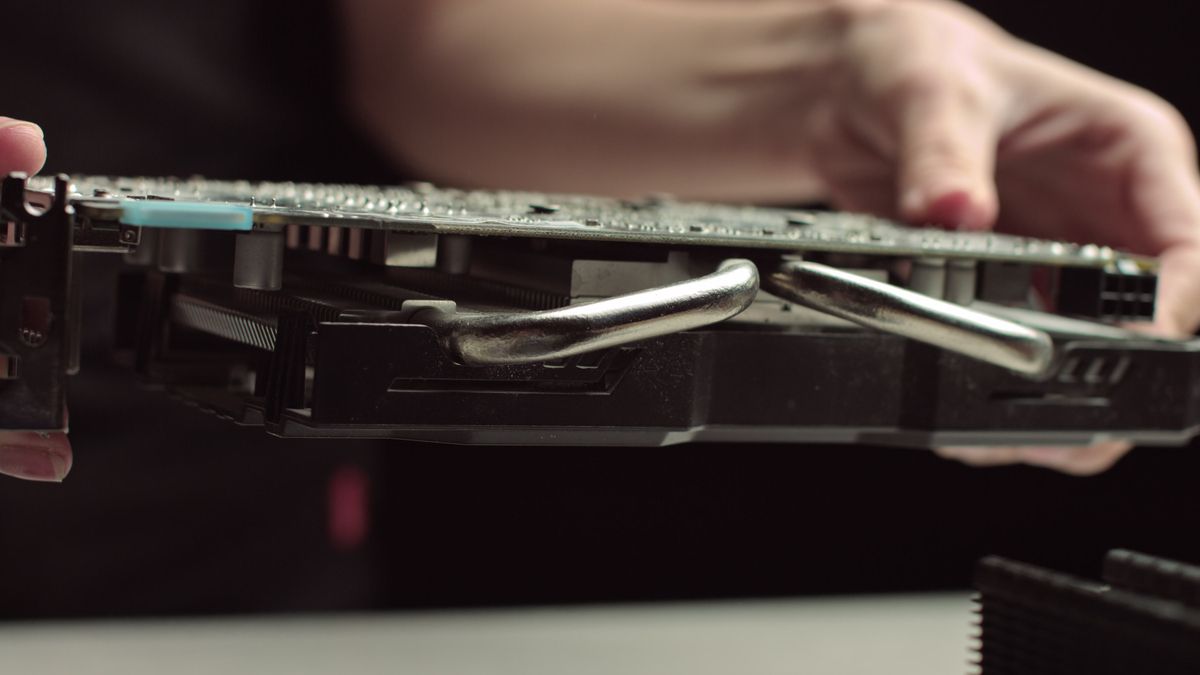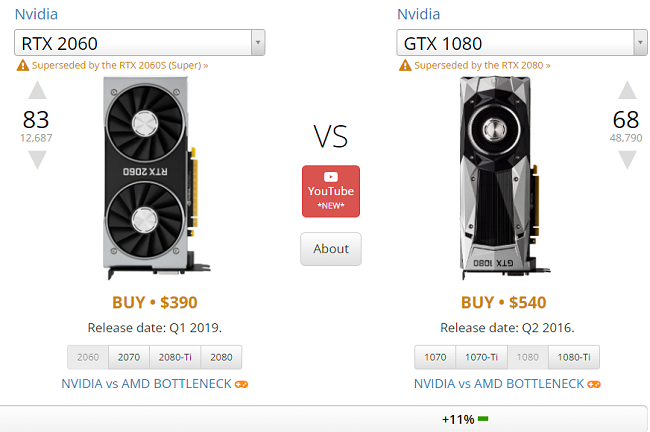Quick Links
The new GPU market leaves you with either no GPUs to buy or impossibly high prices for the GPUs that are available. Understandably, many people are turning to the used GPU market---but there are many pitfalls down this road!
Research Performance Equivalence Across Generations
It's unlikely that you're going to be buying a current-generation GPU on the used market. Most GPUs that are available for sale are from the previous or older generation of products. This makes it harder to judge which cards are right for you, or how much you should pay for them.
This is why it's important to find out how the used card you're looking at compares to the current generation of cards. The high-end GPU from two or three generations ago may only be as good as the entry-level or midrange card of today.
This means that you should be paying less for that used card than the modern equivalent. If not, it makes more sense simply to buy the new lower-end card, assuming that it meets your performance needs.
In the context of card shortages and inflated retail prices, the general rule still applies. You should be saving money compared to a new performance-equivalent card's inflated price too when buying a used model.
Investigate the History of the Card
Knowing the provenance of a used GPU can be important, although perhaps not as important as you may think. The most common advice given here is that you should avoid buying GPUs that have been used for cryptocurrency mining. However, those concerns are overblown and ex-mining GPUs can be a good deal if you know what you're doing.
The history of the card isn't nearly as important as its current state, but some facts may be important. Especially if the card was an OEM (original equipment manufacturer) board that was never sold at retail. These cards were built to be sold as part of a pre-built computer and are usually unbranded. There's nothing wrong with an OEM card in principle, but you'll have to pay special attention to whether an OEM card has the same specifications, clock speeds, and build quality as a retail card.
Insist on Testing and Inspecting the Card
This is perhaps the most important part of buying a used GPU. If you're buying it directly from a private seller in person, it's best to inspect and test the card before any money changes hands. That means either taking your desktop system along or asking the seller to have the card installed in a computer when you arrive.
It's a good idea to use a stress-test program such as FurMark to check if there are any visual glitches or whether the GPU overheats. You may also want to run a benchmark using a program such as 3DMark so that you can see whether the card is performing as it should. Make sure to also run GPUZ and ensure that the information it shows lines up with what the seller claims the card is.
Apart from software-based testing, listen to the card while it's running under load. Does the fan make any rattling or squeaking noises? This is likely a sign that the fan needs to be replaced, which can be a simple or a complicated job depending on the specific card.
If the card did overheat or show graphical glitches, the fan may also not be working as intended. Alternatively, especially on older cards, the thermal paste between the GPU and heatsink may no longer be good. This could also be fine if you're willing to take the card apart, clean the heatsink and fan, then reapply new thermal paste. However, unless the seller is willing to let you return the card if it still isn't working right after such repairs, it's probably best to pass on it.
Finally, take the card out of the test machine and inspect it visually. A bit of dust isn't a problem, but if the heatsink or fan is loose, any of the mounting components are bent or there are electronic components such as the capacitors that don't look right, you're better off letting the card go.
Use Payment Protection When Buying Online
If you're buying a used card online, you obviously can't do any testing until after you've paid and taken delivery of the item. This makes it extra-important to stick to online platforms that offer some sort of protection to you so that if you do buy a lemon you can get your money back.
Pay attention to the terms and conditions of sale and make sure you're comfortable with them before making a payment.


